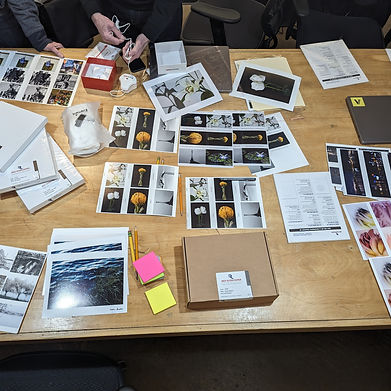
About the Course
This digital printing class introduces digital photographers to the essentials of digital printing. We will use two Epson printers in the Photoworks Digital Lab, but everything you learn will also apply to Canon printers. You will learn about file preparation, color management, paper choices, printer settings, printer maintenance, and making a high-quality print.
What Will You Learn?
This digital printing class introduces beginner printers to the essentials of printing digital images. Students will learn about file preparation, color management, paper selection, and printer settings. Through hands-on experience, they’ll gain the skills to produce high-quality prints, mastering the basics of digital printing for both personal and professional use. Topics Covered:
· Printing from Lightroom Classic’s Print module
· Selecting the right paper for your image
· Solve the “My print doesn’t match my monitor” issue
· The importance of monitor calibration
· Using ICC printer/paper profiles
· Printer driver dialogue box settings choices
Required: Laptop with latest version of Lightroom Classic installed
Suggested, but not required: Monitor calibration device (X-Rite, Spyder, i1 Display or similar)
Printers - Epson 3880 and Epson P800 supplied by Photoworks
Printer paper – various types of papers supplied for testing (matte, glossy, fine art). This class uses Red River Paper (8x10”), but students are welcome to bring their own papers up to 17x22”.
More info: christopher.gumm.photography@gmail.com.
Your Instructor
Christopher Gumm

Christopher originally started taking photos his senior year of high school when he needed an elective course to fill his schedule, and was captivated by the balance of artistic expression and the technical components of capturing light. As an Aerospace Engineer, he brings a technical approach to his processes that allow for a more controlled workflow while also creating an space to explore creatively. Christopher's passions in photography are focused around bending and capturing artificial light along with exploring the outdoors. Once the image is captured, however, the final part of the process is printing the scene to honor the fleeting yet frozen moment in time.
